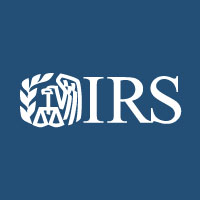IR-2020-164, July 20, 2020
WASHINGTON — For those who missed the July 15 tax deadline and didn’t request an extension, the Internal Revenue Service reminds taxpayers about some important tips, including filing electronically as soon as possible to reduce potential penalties.
Some taxpayers may have extra time to file and pay any taxes due without penalties and interest. These include:
The IRS offers these after-tax-day tips:
File to get a tax refund
The only way to get a refund is to file a tax return. There is no penalty for filing after the deadline if a refund is due. Use electronic filing options including IRS Free File available on IRS.gov through October 15 to prepare and file returns electronically.
The IRS reminds taxpayers that, while we continue to process electronic and paper tax returns, issue refunds, and accept payments, we’re experiencing delays in processing paper tax returns due to limited staffing. If a taxpayer filed a paper tax return, we will process it in the order we received it. Do not file a second tax return or call the IRS.
Taxpayers can track a refund using the Where’s My Refund? tool on IRS.gov, IRS2Go and by phone at 800-829-1954. Taxpayers need the primary Social Security number on the tax return, the filing status and the expected refund amount. The tool updates once daily, usually overnight, so checking more frequently will not yield different results. The “Where’s My Refund?” tool cannot be used to track Economic Impact Payments.
File to reduce penalties and interest
Normally, taxpayers should file their tax return, or request an extension, and pay any taxes they owe by the deadline to avoid penalties and interest. Taxpayers need to remember that an extension to file is not an extension to pay. Penalties and interest will apply to taxes owed after July 15.
Even if a taxpayer can’t afford to immediately pay the taxes they owe, they should still file a tax return as soon as possible to reduce possible penalties. The IRS has more information for taxpayers who owe the IRS, but cannot afford to pay.
Ordinarily, the failure-to-file penalty is 5% of the tax owed for each month or part of a month that a tax return is late. But if a return is filed more than 60 days after the due date, the minimum penalty is either $435 or 100% of the unpaid tax, whichever is less. Filing and paying as much as possible is important because the late-filing penalty and late-payment penalty add up quickly. The basic failure-to-pay penalty rate is generally 0.5% of unpaid tax owed for each month or part of a month. For more see IRS.gov/penalties.
Taxpayers who have a history of filing and paying on time often qualify for penalty relief. A taxpayer will usually qualify if they have filed and paid timely for the past three years and meet other requirements. For more information, see the first-time penalty abatement page on IRS.gov.
Pay taxes due electronically
Those who owe taxes can view their balance, pay with IRS Direct Pay, by debit or credit card or apply online for a payment plan, including an installment agreement. Several other electronic payment options are available on IRS.gov/payments. They are secure and easy to use. Taxpayers paying electronically receive immediate confirmation when they submit their payment. With Direct Pay and the Electronic Federal Tax Payment System (EFTPS), taxpayers can opt in to receive email notifications about their payments.
Need help? Tips for selecting a tax professional
Taxpayers can also look for help from a tax professional. Taxpayers can use several options to help find a tax preparer. One resource is Choosing a Tax Professional, which includes a wealth of consumer guidance for selecting a tax professional. There are various types of tax return preparers, including enrolled agents, certified public accountants, attorneys and some who don’t have a professional credential.
The Directory of Federal Tax Return Preparers with Credentials and Select Qualifications is a free searchable and sortable database. It includes the name, city, state and zip code of credentialed return preparers who are CPAs, enrolled agents or attorneys, as well as those who have completed the requirements for the IRS Annual Filing Season Program. A search of the database can help taxpayers verify credentials and qualifications of tax professionals or locate a tax professional in their geographic area.
Taxpayer Bill of Rights
Taxpayers have fundamental rights under the law that protect taxpayers when they interact with the IRS. The Taxpayer Bill of Rights presents these rights in 10 categories. IRS Publication 1, Your Rights as a Taxpayer, highlights these rights and the agency’s obligation to protect them.

